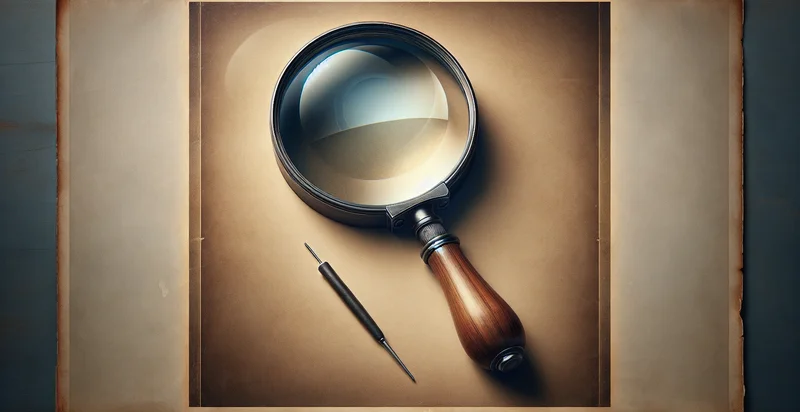Identify what material a magnifying glass is made from
using AI
Below is a free classifier to identify what material a magnifying glass is made from. Just upload your image, and our AI will predict what material a magnifying glass is made from - in just seconds.

Contact us for API access
Or, use Nyckel to build highly-accurate custom classifiers in just minutes. No PhD required.
Get started
import nyckel
credentials = nyckel.Credentials("YOUR_CLIENT_ID", "YOUR_CLIENT_SECRET")
nyckel.invoke("what-material-a-magnifying-glass-is-made-from", "your_image_url", credentials)
fetch('https://www.nyckel.com/v1/functions/what-material-a-magnifying-glass-is-made-from/invoke', {
method: 'POST',
headers: {
'Authorization': 'Bearer ' + 'YOUR_BEARER_TOKEN',
'Content-Type': 'application/json',
},
body: JSON.stringify(
{"data": "your_image_url"}
)
})
.then(response => response.json())
.then(data => console.log(data));
curl -X POST \
-H "Content-Type: application/json" \
-H "Authorization: Bearer YOUR_BEARER_TOKEN" \
-d '{"data": "your_image_url"}' \
https://www.nyckel.com/v1/functions/what-material-a-magnifying-glass-is-made-from/invoke
How this classifier works
To start, upload your image. Our AI tool will then predict what material a magnifying glass is made from.
This pretrained image model uses a Nyckel-created dataset and has 10 labels, including Acrylic, Aluminum, Ceramic, Crystal, Glass, Metal, Plastic, Silicon, Steel and Wood.
We'll also show a confidence score (the higher the number, the more confident the AI model is around what material a magnifying glass is made from).
Whether you're just curious or building what material a magnifying glass is made from detection into your application, we hope our classifier proves helpful.
Related Classifiers
Need to identify what material a magnifying glass is made from at scale?
Get API or Zapier access to this classifier for free. It's perfect for:
- Product Quality Assessment: This function can be employed by manufacturers of magnifying glasses to verify the materials used in their products. By accurately identifying the materials, companies can ensure compliance with safety standards and improve product durability.
- Material Sourcing Optimization: Businesses can utilize this classification tool to assess the materials used in competitor products. This competitive analysis can guide sourcing decisions and help companies choose high-quality materials to enhance their offerings.
- Consumer Education: Retailers can integrate this function into e-commerce platforms to provide customers with detailed information about the materials of magnifying glasses. Educating consumers about material properties can influence purchasing decisions, leading to increased customer satisfaction.
- Repair and Maintenance Services: Service centers can leverage the material classification tool to identify the specific materials of various magnifying glass models. This information can facilitate better repair solutions and maintenance practices tailored to the material, extending the lifespan of the products.
- Marketing Strategies: Companies can use insights from the material identification function to drive targeted advertising campaigns. By highlighting unique materials and their benefits, businesses can differentiate their products in a crowded marketplace.
- Environmental Impact Assessments: Organizations can apply the classification function to analyze the environmental impact of materials used in magnifying glasses. This analysis can support green initiatives, allowing companies to choose sustainable materials and reduce their carbon footprint.
- Academic Research and Development: Researchers can employ this tool to study different types of magnifying glass materials and their properties. This can facilitate advancements in optical technologies by providing critical data for developing new products with enhanced performance characteristics.


